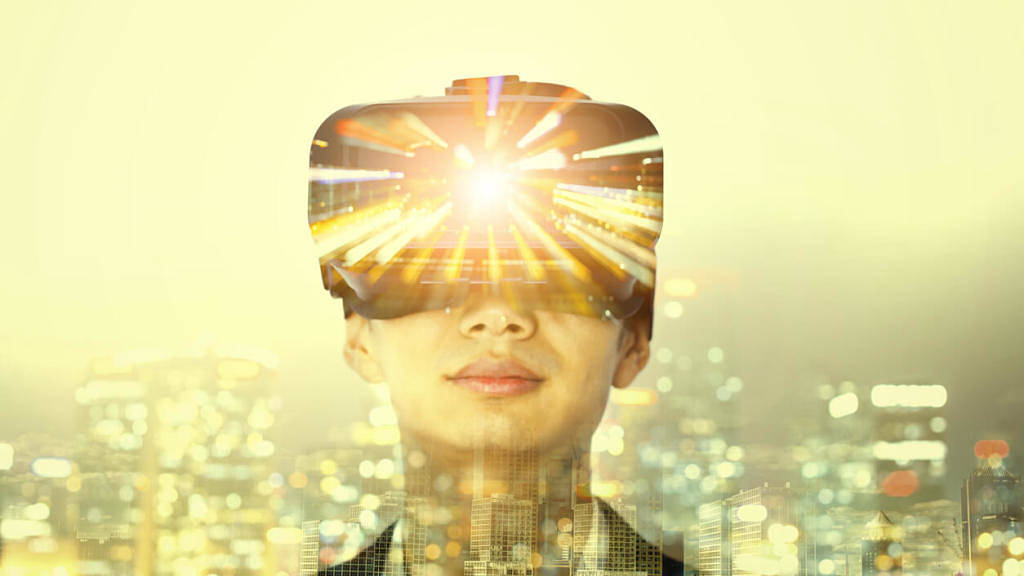Get our independent lab tests, expert reviews and honest advice.
How to buy the best virtual reality headset

Virtual reality (VR) isn’t a far-off concept anymore. The technology that can transport you to a different digital world from the comfort of your lounge room is here to stay.
On this page:
- What is virtual reality?
- How does VR work?
- Games, software and entertainment
- Health and safety
- General limitations of VR
We no longer test virtual reality equipment, but we will continue to update this buying guide to provide a general product overview for anyone interested in buying a headset.
What is virtual reality?
Virtual reality headsets put your point of view in the centre of a digital space, which can be a photograph, a video, an animation or a piece of software such as a video game. Once you put on the headset, you’re free to turn around and look at everything within the virtual sphere.
Say you’re looking at footage of a farm on TV. There’s a lovely green pasture in front, but if you turn around and look over your shoulder, you’ll see your lounge room. In VR, you could watch the same footage, turn around and see a herd of cattle behind you. This is how 360° content works.
Passive vs active
There are two types of VR experiences: passive, which involves looking at a 360° photo or video from a fixed perspective, and active, which lets you interact with the virtual world as you change your perspective. For example, instead of looking at the interior of a car on a 2D screen, you’re “sitting” in the drivers seat in VR.
Either option can trick your brain into believing you’re in the digital environment which leads to some interesting physical reactions. Riding a VR rollercoaster, for example, can give you the same feeling in the pit of your stomach, even though you’re nowhere near a theme park.
How does VR work?
The quality of the picture, and the headset’s capabilities, depend on two factors. 1) the technology and build quality of the headset and 2) the device used to power it. None of the headsets on the market are self-contained, they all require an external device such as a smartphone, PC or games console. Prices start at around $30 for entry-level models, and can go as high as $2000 for top-of-the-line kits.
Dual lenses inside the headset simultaneously process two images to create the illusion of depth. Motion-tracking equipment, either built into the headset (or the device powering it) or connected externally, picks up head movement and in some cases body movement.
VR quality depends on what’s powering the headset. Most fall into one of these categories:
- Entry-level: Headsets that act as a case for a smartphone. You can use any smartphone in an entry-level headset within the manufacturer-specified size limit.
- Mid-range: Better quality image that requires a specific smartphone, such as a Samsung Galaxy model, or games console to run.
- High-end: Advanced, powerful headsets capable of producing a high-quality image, which requires a top-tier PC.
A headset device that needs an $800 phone or $700 console to work may not sound “mid-range”, but this is the case in the grand scheme of VR. In addition to the hefty price tag for a top of the line kit, a PC that’s capable of powering one can set you back as much as $2000 or more.
Sit down, stand up
You can interact with the virtual space in a few different ways, depending on the headset. Most mid-range models support a controller or keyboard and mouse, but higher-end setups use a camera and motion-sensing controls. These detect full-body movements within a small, fixed space and while there isn’t enough room to walk around, you can stand up, sit down, crouch, lean, turn around and so on
Room-scale experiences are as good as it gets. These require at least two cameras placed a few metres apart, to create a VR play space that tracks your whole body. This gives you the freedom to “walk around” in VR and offers the most immersive feeling when combined with motion controllers.
Of course it also depends on whether the software supports all these functions. Some, for example, permit movement but don’t give you the option to walk around even if you have a room-scale setup. However, most games/experiences do give you the option to chose between motion controls, a games controller or keyboard and mouse.
Bear in mind that although full-body and room-scale options can provide a better experience, they are harder to set up. This is one area where mobile VR has an ease of use advantage. Most VR doesn’t require a lot of ‘working’ space though and you should usually have enough room for your headset of choice, unless you want to try the Vive’s room-scale setup.
Games, software and entertainment
Though VR is synonymous with gaming, you can find software for all sorts of things including education, real estate, tourism and online shopping. Tourism is particularly fun, as VR lets you ‘travel’ to another location, without leaving your home. You can even make your own travel content, with consumer-grade 360° cameras.
There’s plenty of 360° video online as well. YouTube is just one popular service that supports VR, and most headsets have their own 360 video libraries. You can even watch 2D content in a VR headset if you really want to. Most brands distribute software online (aside from PlayStation, which sells PS VR games in retail stores), and this can be a problem, as Australian internet speeds are still pretty average. You may have to wait some time for software to download, as well as system updates and drivers, before you can do anything with your headset.
Although there’s a broad range of software available for each tier, you’ll find that the headset quality and experience is indicative of the kind of software it supports. An entry-level, smartphone-based headset, for example, is best used for short, simple, passive experiences with average image quality.
Health and safety
Given that it’s still early days for VR, most manufacturers are taking a cautionary approach to health and safety. No one knows what will happen if you use VR for hours at a time, every single day, though it is generally advised against. Most manufacturers recommend regular breaks. Sony, for example, suggests 15 minutes rest for every hour inside PS VR.
You’re likely to experience some discomfort after a while, especially with the top-end models, as they’re quite heavy. Straps, and padding between the headset and your face, are the main contact points that cause discomfort. The lenses on some models will fog up after a while as well, especially during full-body and room-scale experiences.
VR may even make your stomach churn at first. The sensation can be similar to motion sickness. While technology improvements, such as higher video refresh rates, have reduced the likelihood and impact of nausea, you may still feel a little queasy after an extended or vigorous stint in VR.
There are too many variables including brand, software and level of immersion, to say exactly how you’ll be affected. However, our testers have increased their tolerance after repeated use over several weeks. This, of course, isn’t to say you’ll be affected, or that you’ll adapt if you are, but our experience suggests that it’s possible. The best way to tell is to try a headset yourself. You’ll know fairly soon if you can handle it.
Not quite child friendly
VR seems like the perfect gift or holiday distraction for children, but only to a point. All manufacturers put an age restriction on their headsets, and though most brands don’t specify why these restrictions apply, we suspect this has to do with protecting young and still-developing eyes. Make sure you check the age limit before you buy, otherwise you could put your child at risk.
General limitations of VR
VR is an emerging technology, and there are a few technical shortcomings that affect all brands. The most prominent problem is the ‘screen door effect’, which is faintly visible horizontal and vertical lines appearing in the picture. Advertised resolution is also the total number of pixels spread across both lenses. This means the horizontal resolution is effectively halved in practice.






